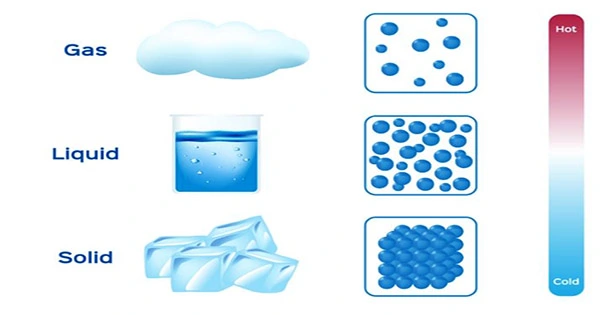There may be fatalities from coronavirus illness in 2019 (COVID-19) depending on the virus, host, vaccination, and therapy. For instance, the infection’s capacity to have negative effects that cause the death of otherwise healthy people may contribute to COVID-19 mortality. Since SARS-CoV-2 infection impairs the health of people who are predisposed to short-term death regardless of the virus, COVID-19 fatality is also probable. Possible long-term consequences of acute SARS-CoV-2 infection include COVID-19 mortality. To best guide public health initiatives on the deployment of non-pharmacologic and pharmaceutical therapies that can reduce COVID-19 mortality, it is crucial to comprehend the relative impact of these paths.
About the study: In the current study, researchers assessed the percentage of deaths from all causes, including COVID-19-related deaths, among SARS-CoV-2 infected people after initial infection.
The national platform for digital-health information was used to access the national mortality database as well as the national datasets for COVID-19 laboratory testing, immunization, and mortality. A retrospective matched cohort study was conducted to examine the prevalence of all-cause mortality observed between a national cohort of people with confirmed primary SARS-CoV-2 infection and a national reference control group consisting of people without any prior exposure to the virus.
According to gender, 10-year age cohorts, country, number of comorbidities, vaccination status, and vaccine type, the study groups were matched one to one. Confounders that were identified to differ between exposure cohorts and could be linked to risks of illness or mortality could be balanced by matching. Additionally, matching was done based on the primary COVID-19 infection test week for the primary infection group and the primary COVID-19 test week for the infection-naive cohort.
The infection-naive control group was iteratively matched to make sure that all of the participants were still alive, had no history of SARS-CoV-2 infection, had not received multiple vaccinations, or had not received a new dose between the time of the COVID-19-negative test and the start of the follow-up.
Results: In each matched cohort, there were 6,85,871 people. The median follow-up time in the analysis of acute COVID-19 mortality was 91 days. During follow-up, 342 deaths in the primary-infection group and 288 in the infection-naive group were identified. 223 of the 342 fatalities were attributable to COVID-19.
The cumulative mortality incidence in the primary-infection group was 0.085% after 91 days of follow-up, whereas it was 0.072% in the infection-naive group. When comparing the incidence of mortality between the unvaccinated primary-infection group and the unvaccinated infection-naive group during the acute scenario, the adjusted hazard ratio (aHR) was 1.19. According to subgroup analyses, those with a higher clinical vulnerability to severe COVID-19 had an aHR of 1.34 as opposed to those with a lesser clinical susceptibility, who had an aHR of 0.94.
The median follow-up time for each group in the analysis of post-acute SARS-CoV-2 infection mortality was 296 days. In the cohort with initial infection, a total of 72 fatalities were reported during follow-up, while 142 fatalities were reported in the infection-naive group. COVID-19, which was connected to the initial infection, was to blame for five of the 72 fatalities recorded in the group with primary infections. The cumulative mortality incidence was 0.036% in the primary-infection group and 0.060% in the infection-naive group after 450 days of follow-up.
The aHR comparing the mortality incidence in the unvaccinated primary-infection group to the unvaccinated infection-naive group throughout the post-acute period was 0.50. The aHR was 0.41 between the third and seventh month after the primary infection, and it increased to 0.76 in the months that followed. In the post-acute phase, those who were more clinically vulnerable to severe COVID-19 had an aHR of 0.37, whereas those who were less clinically susceptible had an aHR of 0.77.
The team’s investigation of acute COVID-19 mortality found that the aHR, which compared mortality incidences between groups that had received vaccinations for primary infection and those that had not, was 0.74. According to subgroup analysis, the aHR was 0.64 in people who had a higher clinical vulnerability to severe COVID-19 as opposed to 1.08 in people who had a lower clinical susceptibility. The aHR that compared the mortality incidence in the primary-vaccinated group to the infection-naive group in the analysis of post-acute SARS-CoV-2 infection deaths was 1.10. The aHR was 0.96 in people with a higher clinical vulnerability to severe COVID-19 and 2.0 in people with a reduced clinical susceptibility, according to subgroup investigations.
Conclusion: According to the study’s findings, COVID-19 mortality in Qatar is mostly driven by the forward migration of people with very short life expectancies. This conclusion was supported by the data currently available. Additionally, the pull-forward effect was perceptible across the board but was markedly more obvious in people who were clinically more vulnerable to severe COVID-19. But in patients with reduced clinical susceptibility, no such effect was seen. The findings do not decrease the relevance of COVID-19 mortalities among otherwise healthy individuals or fatalities brought on by protracted COVID, even though there was no detectable influence for these deaths in the population of Qatar.
















